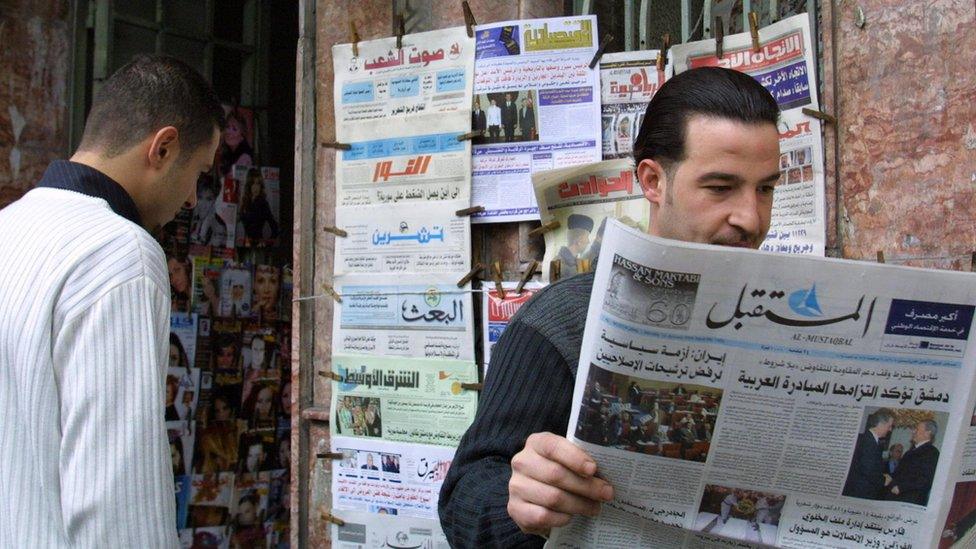Syria media guide
- Published
This page is no longer being updated. It was last updated on 9 December 2024

Syria has three distinct media environments - pro-government, opposition and Kurdish - reflecting its territorial divisions after more than a decade of war.
It as yet unclear how the media landscape will change with the fall of the Assad regime.
Journalists have faced clear red lines on reporting, and media workers have been targeted by all parties to the conflict.
Many anti-Assad outlets have been based abroad for security reasons - mainly in Turkey, but also in Europe and the US. Opposition media still based inside Syria has operated in territory that was outside control of the now-toppled Assad regime.
Although audience data is scarce, television and online media are known to be popular. Although in decline elsewhere in the region, the print sector includes some of Syria's most influential outlets.
Kurdish media began to flourish after 2012, as Kurdish-led forces began to take control of areas in the north.
The Kurds along with their local Arab allies and other minorities run the self-declared Autonomous Administration of North and East Syria (AANES).
While it has endorsed "free and democratic" media, the AANES has been criticised for restricting critical reporting.
Facebook is the top social media platform, and there are many highly-localised accounts that focus on a particular area or town. Messaging apps are often used to access news.
There were 8.5 million internet users by July 2022, comprising 46% of the population (Worldinternetstats.com).
Press/Online
Al-Baath, external - paper of the former ruling Baath party
Enab Baladi, external - opposition weekly, based in Turkey
Shaam Network, external - pro-opposition news site
Al-Watan, external - prominent privately-owned daily
Television
Al-Ikhbariya al-Suriyah, external (Syria News) - state-run news TV
Syrian TV, external - state-run, operates domestic and satellite networks
Sama TV, external - private, pro-government
Orient News, external - opposition, online only, based in Istanbul
Ronahi TV, external - leading Syrian Kurdish outlet, pro-AANES
Radio
Radio Damascus, external - main national state network
Al-Madina FM, external - private radio
News agency
Syrian Arab News Agency (Sana), external - state-run, in Arabic, English and French